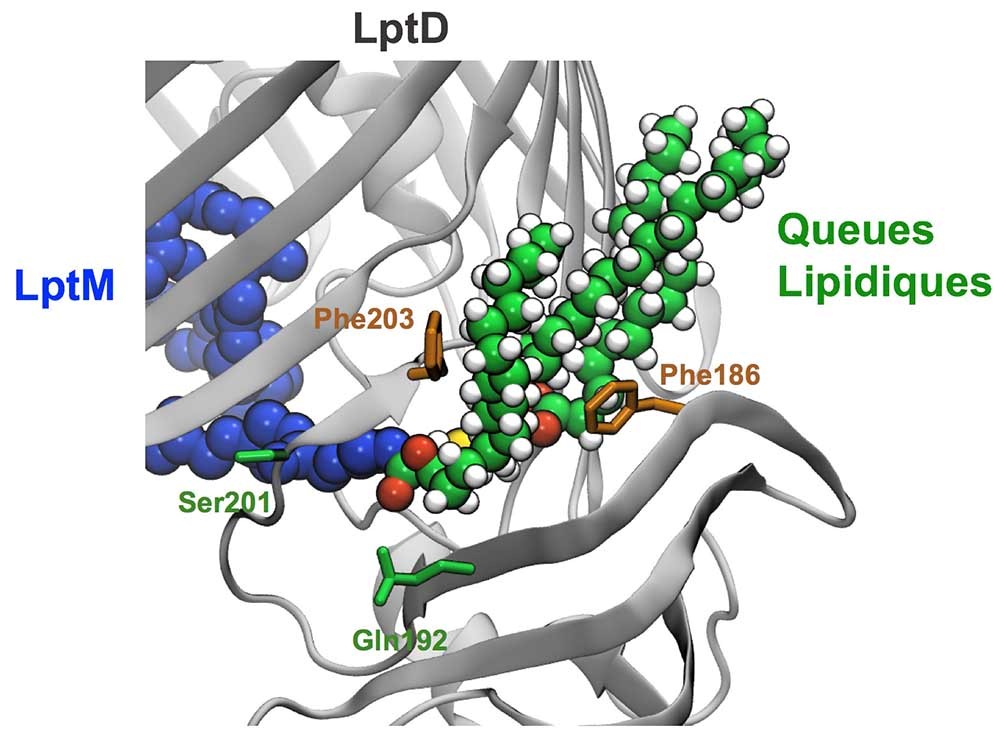- Institute
- Research topics
- Organization
- Platforms
- Services
- Europe/International
- Science outreach
- Agenda
- Directory
- Access

Enterobacteriaceae, Gram-negative bacilli found mainly in the intestinal flora of mammals, include species that represent a major cause of death from bacterial infection. These bacteria are surrounded by an envelope containing lipopolysaccharide that protects them from detergents and antibiotics.
The team of Raffaele Ieva (LMGM-CBI) together with collaborators from the LMGM-CBI (Yves Quentin), the IPBS (Julien Marcoux), and at the University of Warwick in UK (Robin Corey and Phillip Stansfeld), have identified a new component (called LptM) of the molecular machine that assembles lipopolysaccharide in the bacterial envelope. The researches have shown that LptM primes the machinery of lipopolysaccharide assembly by mimicking the binding of its natural substrate.
The study reveals a potential "Achilles heel" to exploit for the screening of new antimicrobial therapies.

© Robin Corey and Raffaele Ieva
Figure : Vue rapprochée du site de transport des lipopolysaccharides dans la structure de LptD : les essais biochimiques et la prédiction structurale montrent que la lipoprotéine LptM occupe avec ses queues lipidiques le site de transport des lipopolysaccharides.
 Read more :
Read more :
 Contact :
Contact :